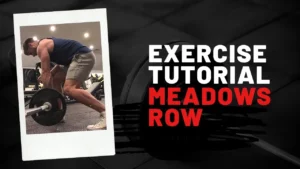What does Cadence mean in fitness?
In the world of fitness, success often hinges on understanding and harnessing the subtleties that can propel one’s workouts from ordinary to extraordinary. Among these nuances lies the concept of “cadence.” While the term might initially evoke images of musical rhythms or poetic meters, in the context of fitness, cadence takes on a whole new meaning—one that can significantly impact the efficiency, safety, and results of your workouts.
So what is cadence?
In its simplest form, cadence refers to the rhythm and pace at which movements are performed during exercise. This can apply to various types of physical activities, including running, cycling, swimming, strength training, and even yoga. Much like a metronome guiding a musician’s tempo, understanding and controlling your cadence can lead to a more controlled and beneficial workout experience.
Cadence in Different Fitness Modalities
1. Running and Cycling: In the realm of running and cycling, cadence specifically refers to the number of steps taken per minute while running or pedal revolutions per minute while cycling. For runners, cadence is measured in “strides per minute” (SPM), while cyclists use “revolutions per minute” (RPM). Achieving an optimal cadence is crucial for efficiency and injury prevention.
Studies have shown that maintaining a higher cadence, within a certain range, can reduce the risk of overstriding and subsequent injuries in runners. Overstriding—where your foot lands too far in front of your body—can lead to increased impact forces and potential discomfort. In cycling, a higher cadence can reduce strain on your knees and potentially improve cardiovascular endurance.
2. Strength Training: While the concept of cadence is often associated with cardio exercises, it’s also relevant in strength training. The cadence of strength exercises refers to the tempo at which you lift and lower weights. For instance, a common notation for cadence is expressed as a series of four numbers, such as “2-0-2-0,” where each number indicates the seconds it takes to complete a different phase of the movement.
Incorporating controlled cadence into strength training can enhance muscle engagement, increase time under tension (an important factor for muscle growth), and prevent using momentum to complete repetitions. It forces you to focus on both the concentric (lifting) and eccentric (lowering) phases of the movement.
Why is finding the right cadence important?
1. Enhancing Efficiency: In running, maintaining an optimal cadence can improve running efficiency. It encourages shorter, quicker strides that minimize ground contact time, ultimately leading to faster times. This is particularly relevant for long-distance runners aiming to conserve energy and maintain a consistent pace.
2. Injury Prevention: Optimal cadence is closely linked to proper biomechanics, reducing the risk of injury. Running with a lower cadence and longer strides can result in overstriding and a higher likelihood of impact-related injuries, such as shin splints or knee discomfort. By increasing your cadence, you naturally take smaller, more controlled steps that place less stress on your joints.
3. Cardiovascular Benefits: In cycling, maintaining an appropriate cadence can improve cardiovascular efficiency. A higher cadence can increase blood flow and oxygen delivery to working muscles, leading to improved endurance. It can also reduce the potential strain on your heart during intense cycling sessions.
4. Muscle Engagement: In strength training, using the right cadence ensures that your muscles are engaged throughout the entire range of motion. This engagement promotes muscle growth and strength gains. It’s not just about lifting the weight; it’s about controlling it through both the lifting and lowering phases.
5. Mental Focus: Adhering to a specific cadence requires concentration and mental engagement. This mindfulness can enhance your mind-body connection and overall workout experience. It encourages you to listen to your body, making adjustments as needed to maintain the desired cadence.
How do you find the right cadence?
Discovering the ideal cadence for your workouts requires some experimentation and consideration of your fitness goals and preferences. Here’s how you can approach it:
1. Running and Cycling: To find your optimal running or cycling cadence, start by counting your strides or pedal revolutions for one minute. For running, a common target range is around 170 to 180 SPM. In cycling, many experts recommend aiming for 80 to 100 RPM. However, these numbers are not one-size-fits-all; factors such as your body’s natural mechanics and the terrain you’re on can influence your ideal cadence.
Gradually adjust your cadence while keeping an eye on your perceived effort and comfort level. If you find that you’re straining too much, or if your form starts to break down, you might need to reconsider your cadence.
2. Strength Training: When it comes to strength training, the ideal cadence can vary depending on your goals. For muscle hypertrophy (growth), consider using a controlled tempo like “2-0-2-0,” where you take two seconds to lift the weight, don’t pause at the top, take two seconds to lower the weight, and then don’t pause at the bottom. For strength gains, you might opt for a slightly faster cadence on the concentric phase (lifting) and a controlled eccentric phase (lowering).
Remember that the weight you’re lifting and your familiarity with the exercise can also influence the appropriate cadence. As you gain experience, you’ll develop a sense of the cadence that works best for you.






